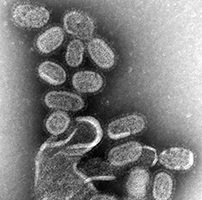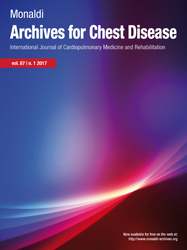Respiratory pathogens in patients with acute exacerbation of non-cystic fibrosis bronchiectasis from a developing country

All claims expressed in this article are solely those of the authors and do not necessarily represent those of their affiliated organizations, or those of the publisher, the editors and the reviewers. Any product that may be evaluated in this article or claim that may be made by its manufacturer is not guaranteed or endorsed by the publisher.
Authors
Bronchiectasis unrelated to cystic fibrosis (non-CF bronchiectasis) has become a major respiratory disease in developing nations. The dilated mucus filled airways promote bacterial overgrowth followed by chronic infection, bronchial inflammation, lung injury and re-infection. Accurate pathogen identification and antimicrobial susceptibility allowing appropriate treatment, in turn, may break this vicious cycle. This study aimed to gain kowledge about the spectrum and antimicrobial spectrum of pathogen yielded from respiratory specimens in adult patients with acute exacerbation of non-cystic fibrosis (CF) bronchiectasis. This cross-sectional study was performed at the pulmonology clinics of the Aga Khan University, Karachi, Pakistan from 2016-2019. Respiratory specimens were collected from adult patients with acute exacerbation of non-CF bronchiectasis presenting in pulmonology clinics. Microbial cultures were performed using standard methodology. Susceptibility testing was performed and interpreted using Clinical Laboratory Standard Institute criteria. A total of 345 positive cultures from 160 patients presenting with acute exacerbation were evaluated. The most frequent organisms were Pseudomonas aeruginosa (n=209) followed by Hemophilus influenzae (n=40) and Staphylococcus aureus (n=24). High rates of antimicrobial resistance were found in all these pathogens. Proportion of Pseudomonas aeruginosa strains resistant to ciprofloxacin, imipenem, ceftazidime and piperacillin-tazobactam were 27.1%, 16.8%, 14.8% and 13.1% respectively. 65% of Hemophilus influenzae strains were resistant to cotrimoxazole and ciprofloxacin and 66.7% of Staphylococcus aureus strains were resistant to methicillin. High antimicrobial resistance in non-CF bronchiectasis patients against commonly used antimicrobials is a concern and highlight need for urgent community level interventions to improve clinical outcome in these patients.
How to Cite

This work is licensed under a Creative Commons Attribution-NonCommercial 4.0 International License.






